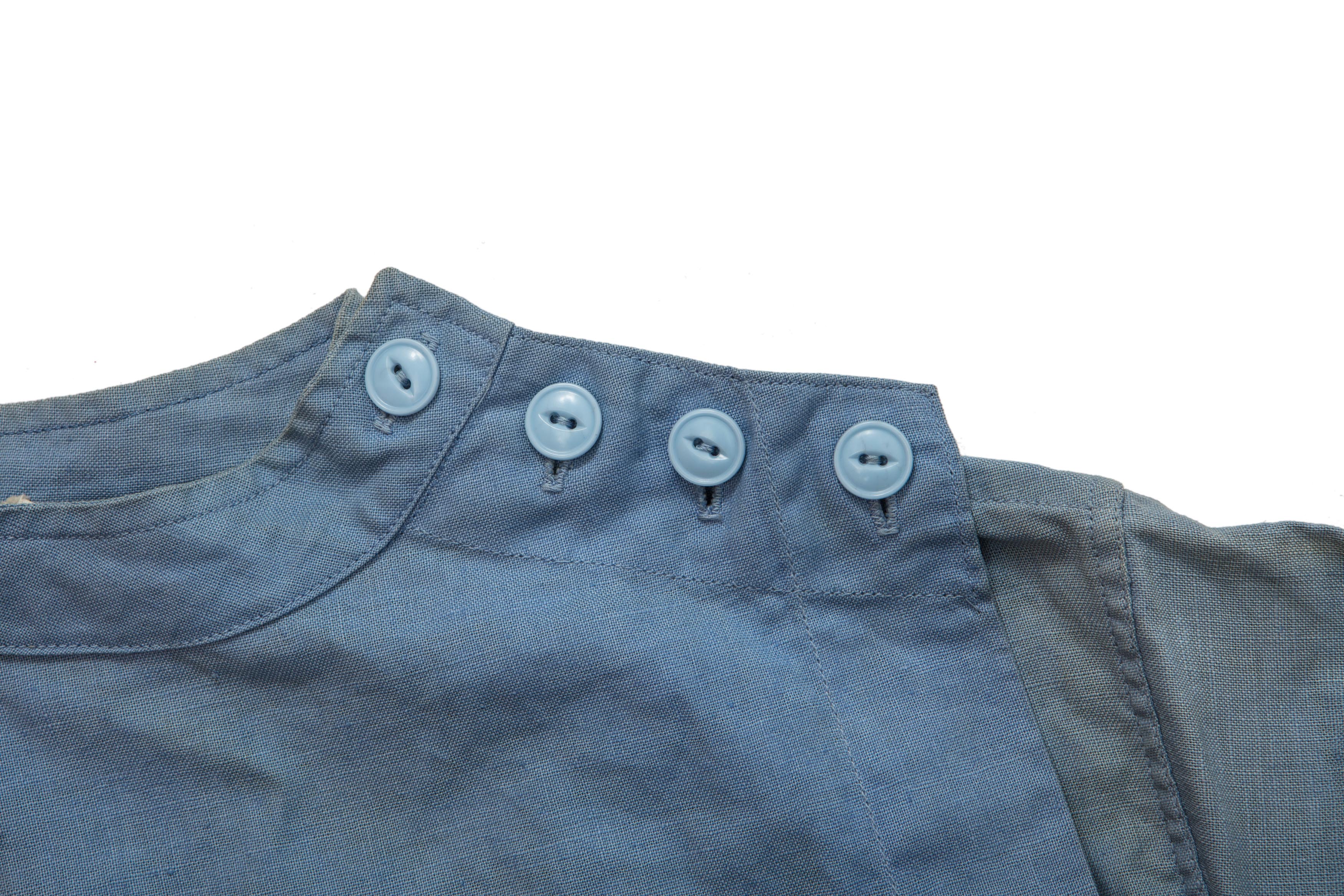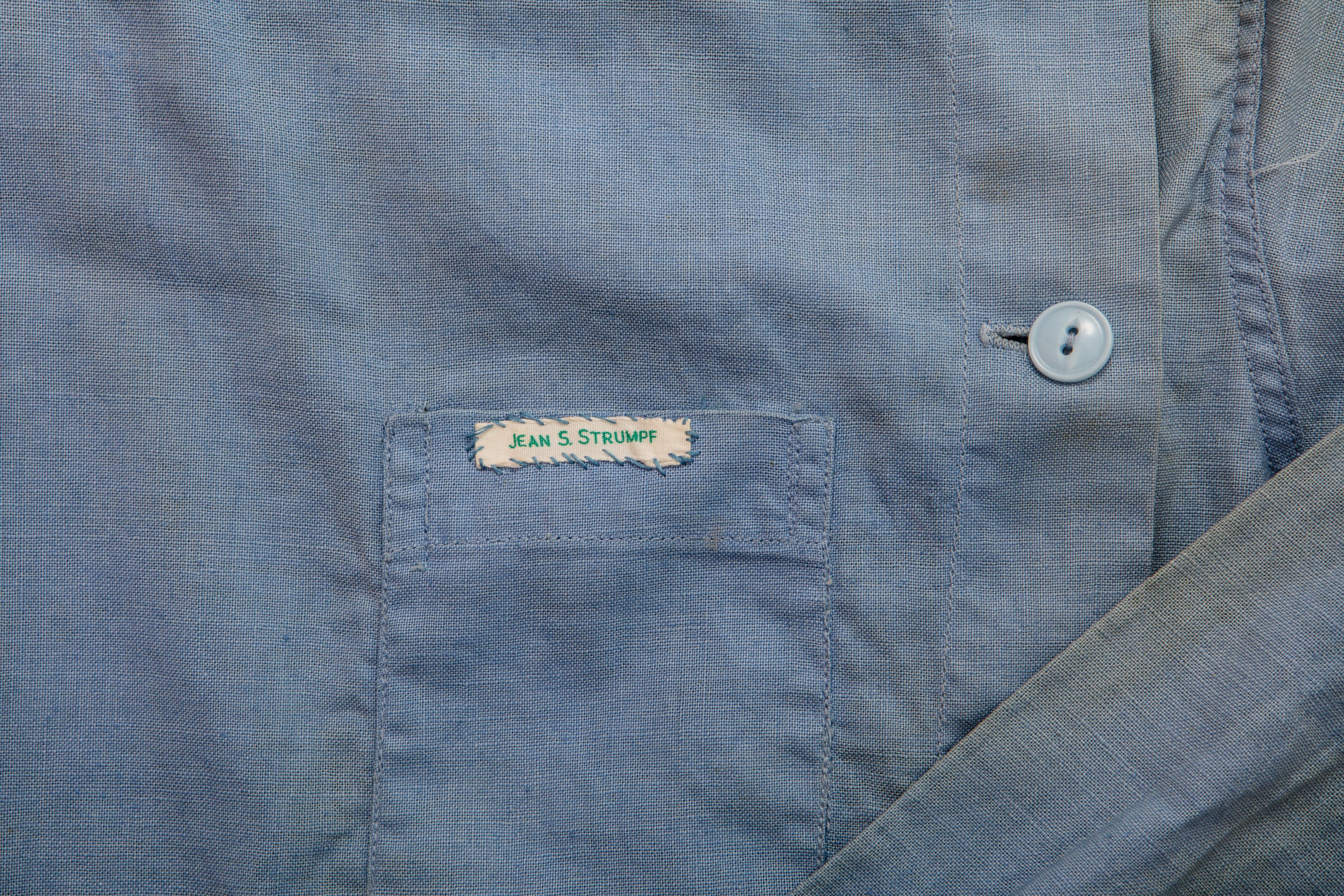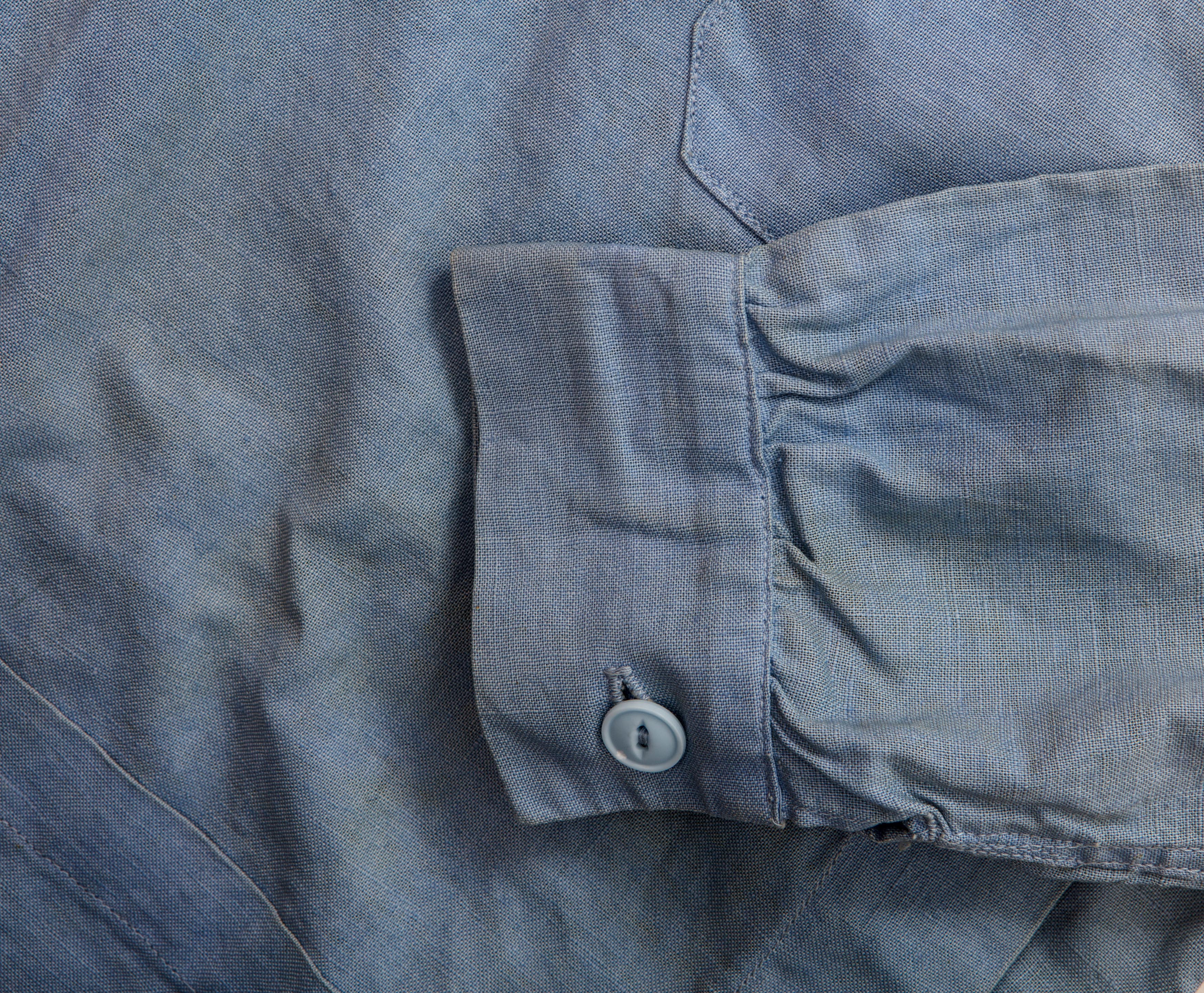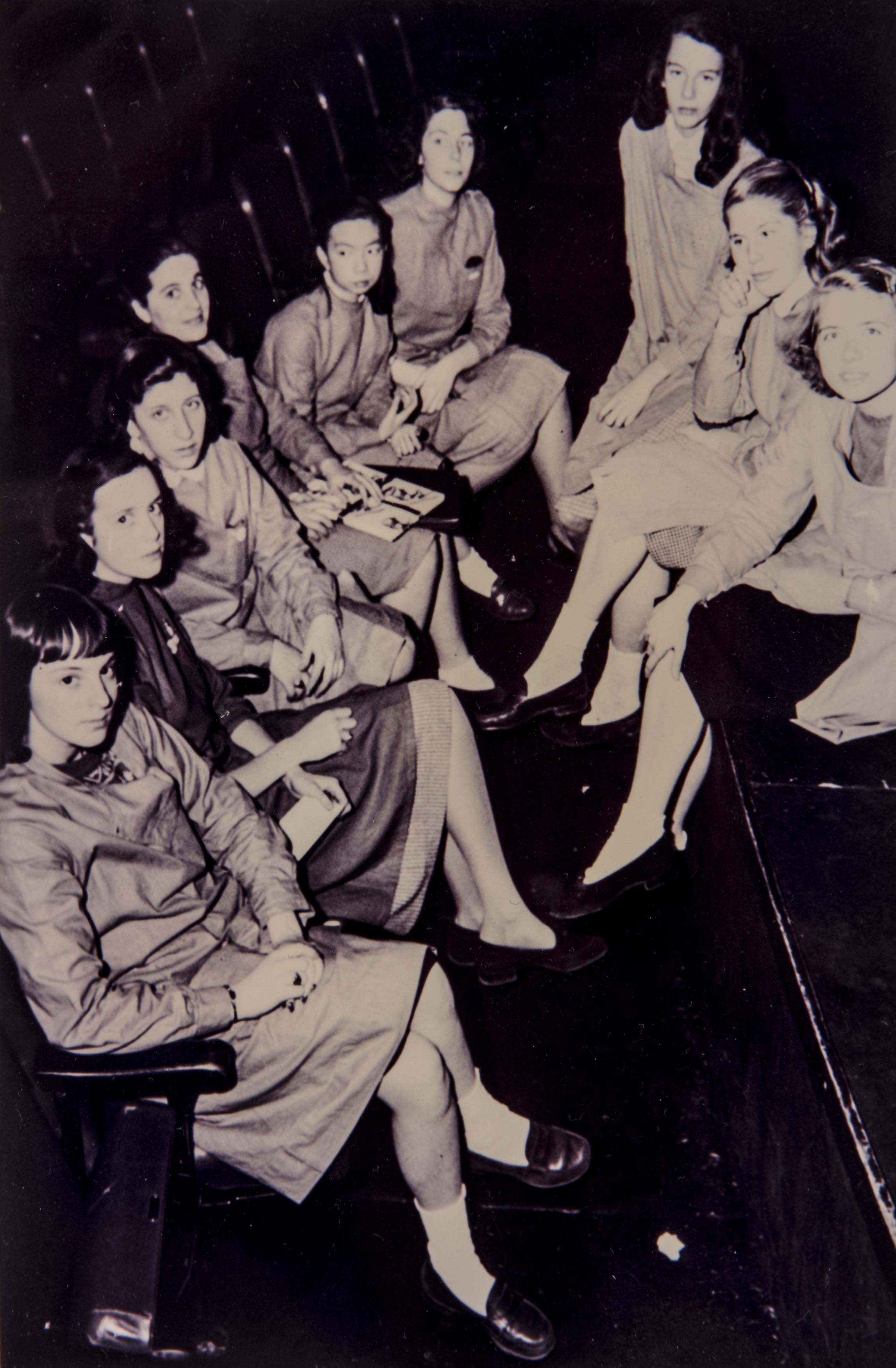1. The Smock
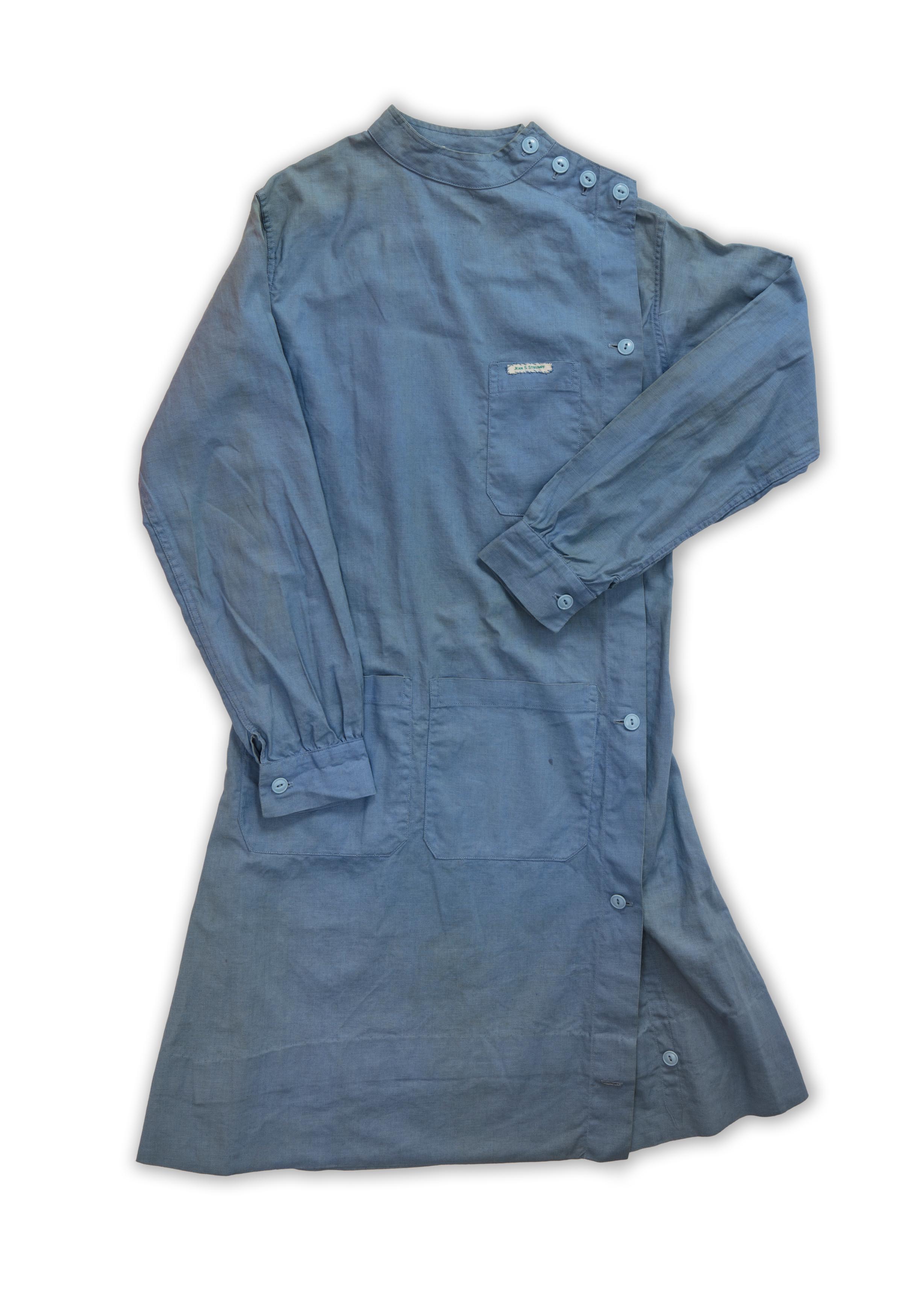
From the 1930’s through the 1960’s, Dalton girls wore smocks over their street clothes. While most often blue, in the 1930’s and 40’s lower grades wore different colors. During the late 40’s, girls sometimes innovated with pins, scarves, and various collars underneath. In the 60’s students distinguished themselves with different shoes and colored knee socks. Smock courtesy of Jean Strumpf ’65
From the 1930’s through the 1960’s, Dalton girls wore smocks over their street clothes. While most often blue, in the 1930’s and 40’s lower grades wore different colors. During the late 40’s, girls sometimes innovated with pins, scarves, and various collars underneath. In the 60’s students distinguished themselves with different shoes and colored knee socks.
” I arrived at Dalton in 7th grade from public school in Queens and had no idea that clothes were important or sent any messages. I was told that smocks were required so there wouldn’t be clothes competition. I was clueless what that was. The smock defined a period of social control that the 60’s swept away. For those of us who wore it, it was unforgettable. The smock was an attempt to level the playing field, although there were very few poor girls in the high school.”
—Thea Volpe Browne ’74
“Commuting every morning to Dalton from the “country,” my sweaters and skirts were hurriedly thrown together and often mismatched…at that time, in my class, a sin! When I put on my Smock, my anxieties disappeared. The blue smock was my magic costume, I never forgot it. I’ve often been tempted to have one copied. It was a Dalton tradition that helped lessen both adolescent angst, competition, and issues around social acceptance.”
—Wendy Teichman Levine ’48
